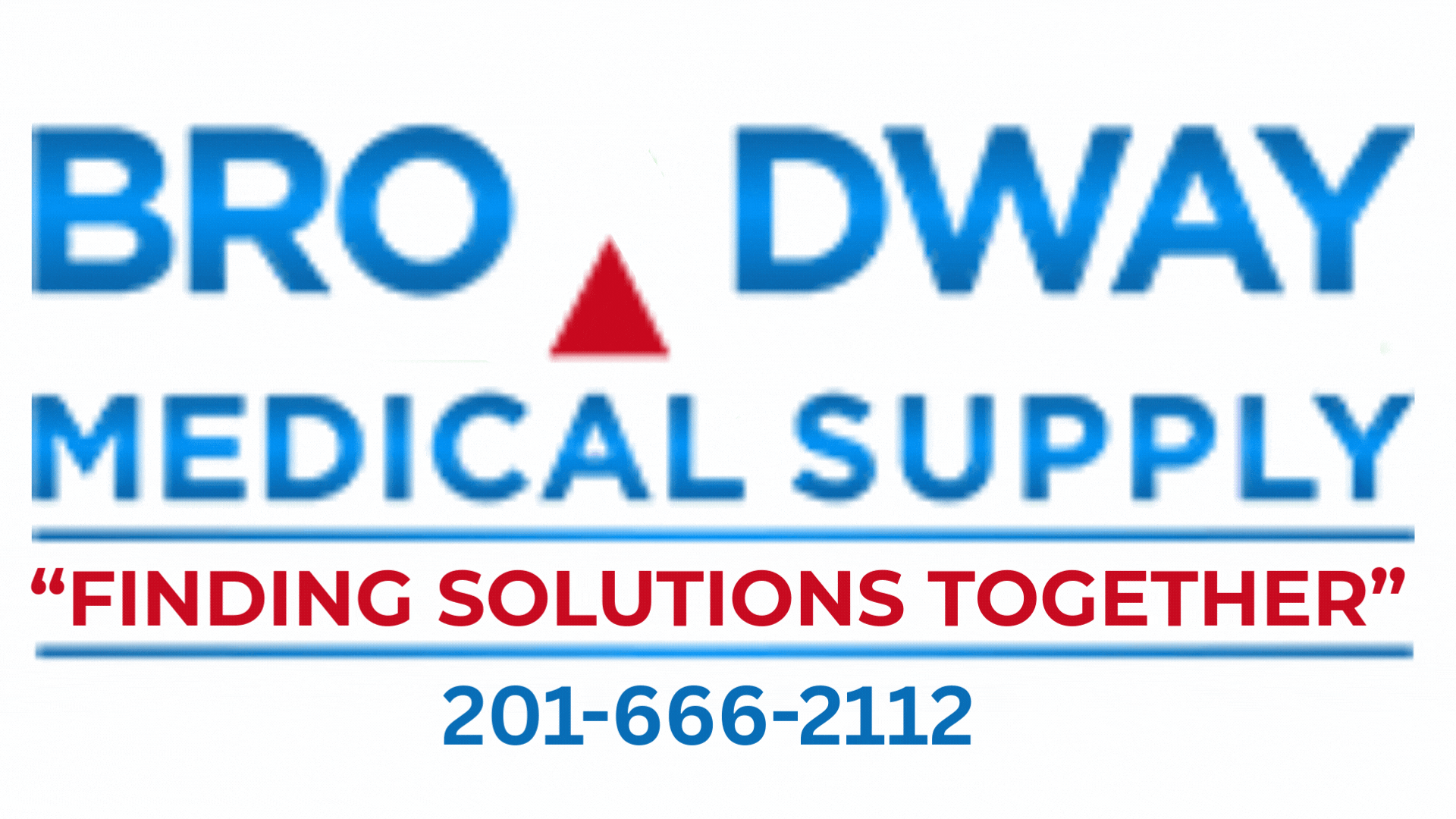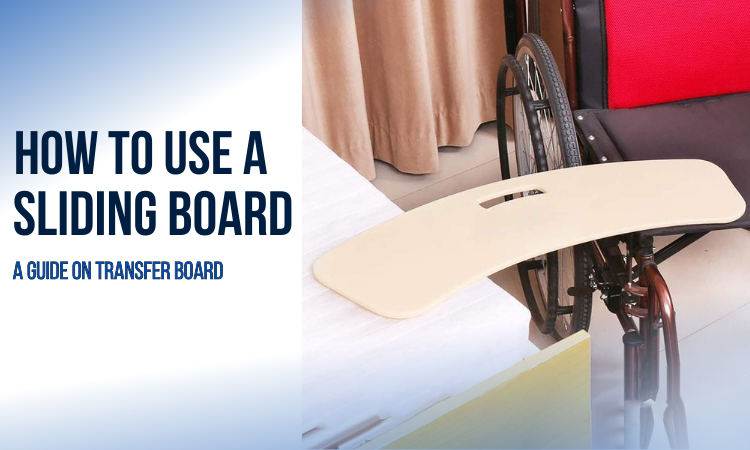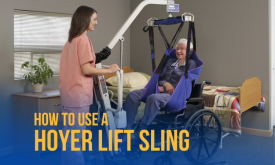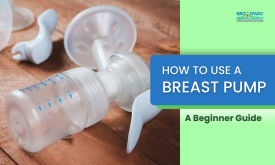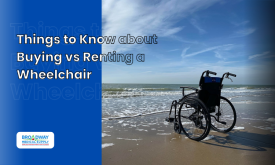Mobility is highly affected when there are health issues and when using medical equipment to ease out the lifestyle of the patient. One mobility issue that is quite common is shifting from one surface to another. The medical transfer board supports easy transfer with its design and functions. A transfer board helps you to shift from a wheelchair or bed to a commode or vice versa. While knowing how to use a sliding board is important, knowing what exactly a medical transfer board is and the precautions to take helps one better use the board. The below-shared guide on patient transfer boards will help you understand how to use sliding boards at their best.
What is a Medical Transfer Board?
A medical transfer board helps the patient to easily glide from a bed, wheelchair, etc., to another surface. It works as a bridge between two surfaces, which helps control the movement and prevent falls and injuries. The transfer board has a smooth surface, which ensures convenient transfer, and has a compact design for ease of use. Crafted from wood, the board bears the patient's weight without breaking and has a non-slip base. The medical slide board has dual handles and locks that offer complete support and a secure grip.
Why Do You Need a Patient Transfer Board?
Many medical reasons require the patient to get complete rest. Using patients' slide boards is very beneficial to ensure the body is at rest and still mobility is not affected. Here are a few medical conditions that get aid from using a transfer board by relaxing the strain put on the body:
Leg Injuries
Individuals with leg injuries often require complete rest to recover properly. Hence, it is important to ensure that the legs are at rest and don't bear any body pressure. Individuals with injured legs may experience pain and difficulty in balancing while moving from one place to another. Using a patient slide board helps to transfer the patient easily without causing any pain or disbalance.
Severe Back Pain or Injury
In case of back pain or injuries, it becomes difficult to stand and sit quickly. The movement causes immense pain and disturbs recovery. Hence, while transferring from bed to a wheelchair or any other place, a medical slide board comes to the rescue. It allows the patient to move in small, gradual movements at a time instead of one large motion in one go.
Accidents and Surgeries
Accidents and surgeries can cause immense pain to your different body parts. For complete recovery, patients need to take bed rest as recommended by a doctor. However, while moving the patients from one place to another for different activities such as tests, surgeries, etc., a medical transfer board is used. Bridging the gap between two resting equipment, such as a bed and a wheelchair, ensures the safe and stress-free transfer of patients.
Paralysis or Lack of Movement in the Lower Body
Patients with paralysis don't have sufficient energy to move from one place to another. The lack of movement in their lower body affects their mobility. However, by using the patient transfer board, it becomes easier. The patient can be comfortably shifted to another place or in a wheelchair without applying pressure on caregivers or anything around.
Arthritis
For individuals suffering from arthritis, it becomes difficult to move independently as it causes pain, stiffness, and inflammation in the joints. Whether at the hospital or at home, a medical transfer board is used to move the patient effortlessly. The transfer board offers independence to the patient and eliminates the exertion of pressure on the caregiver.
Osteoporosis
When individuals face mobility issues due to health concerns like Osteoporosis, patients often require support for easy mobility. Hence, in hospitals or at home, medical transfer boards are used to ensure smooth mobility of the patient from one place to another.
Weaker Lower Body
Lifting a patient using body strength is not always a reliable option. Medical solutions like patient transfer boards are convenient options for the mobility of patients. Individuals experience less difficulty and pain during the transfer movement.
What are the Benefits of Using a Medical Slide Board?
Learning how to use a sliding board offers many benefits to patients and caregivers. From lesser strength to easy maintenance, these medical transfer boards are everything you are looking for in terms of easy mobility.
Requires Lesser Upper Body Strength
The transfer board requires the patient to make small movements while sitting on the board. This prevents exerting much pressure on the upper body and requires moderate strength. With minimal support and exerting less pressure on the caregivers, patients can independently move from one place to another.
Easy Transfer
Using a patient slide board helps to transfer the patient easily without causing much discomfort. It gets easily fixed on the two surfaces and allows the patient to sit and slide from one end to another in slow movements.
Soft on Skin
The transfer board is designed using high-quality wood to ensure a smooth, gliding surface. The smooth board is soft for the skin and prevents rashes from friction. Hence, while moving, patients can stay worry-free about getting their skin affected.
Reduces Risk of Falls
The sturdy material of the medical transfer board aids in supporting the patient. It is smartly fixed between the two ends and allows the patient to move smoothly. This ensures that the patient doesn't fall or cause injury to themselves.
Easy Maintenance
A guide on how to use a sliding board involves proper ways to store and maintain it. The quality and design of the board allow for easy maintenance and can fit in any small place easily.
How to Use a Sliding Board?
Using a medical transfer board includes a few essential steps. Learning these steps is important to ensure the safe and smooth transfer of patients from one place to another.
Step 1: Place the Medical Transfer Board
Take the transfer board and place it between both surfaces. Keep the rough side down and slightly lift the inside of the leg to allow the transfer board to sit under the patient's thigh. Ensure at least one-third portion of the transfer board is below the leg.
Step 2: Secure and Lock
Before you support the patient to transfer, ensure the patient transfer board is secured and locked in place. It can move and cause falls and injuries if it is not secure.
Step 3: Transfer
After fixing the board, it's time to support the patient to transfer from one surface to another. Support the patient from the back to ensure safety. Angle slightly to shift the weight and slowly shift in small motions. Use the countdown method for smooth coordination and transfer to the other end of the medical transfer board.
Tips and Precautions
While you know how to use a sliding board, some tips and precautions can add to a better experience. Here are a few tips and precautions to keep in mind:
Read the User Manual
Whether it's a medical transfer board or any other equipment, always ensure that you read the manual completely. It allows you to understand the right functioning of the transfer board. You can implement the same procedure while practicing practically with patients. The proper applications ensure the patient's safety.
Secure and Lock the Board
Patients' safety and security should always be on top while using the medical transfer board. Before moving the patient, ensure that the medical transfer board is secured accurately and locked well. You can move the patient after securing it tight between the two ends of the transfer equipment.
Wear Clothes to Avoid Friction
Though the patient's transfer boards are smoother, they can cause friction while moving. Hence, wearing clothes covers the skin and ensures a smooth transfer of the patient.
Place Your Hand Properly
While moving on the medical slide board, keep your palm flat on both sides of your body. You can put slight pressure on your hands to move ahead. Placing your hand under the board can cause injuries.
Use Transfer Belt
For more support and safety, you can use a transfer belt or any other orthopedic device to move the patient using a medical slide board.
Remove the Armrest of the Wheelchair for Easy Movement
When the patient is in a wheelchair and needs to be transferred to another place, you can remove the armrest. You can fix the medical transfer slide easily, and the patient can move without any difficulty to the other place.
Lean Forward While Moving on Board
Patients, while moving, should learn how to use a sliding board accurately and create the right balance. Lean forward while moving on the transfer board, which helps to balance your weight properly. This practice also helps to prevent falls.
Minimize the Distance Between Surfaces
While placing the patient transfer board, try to reduce the distance as much as possible. This helps the patients to move quickly and effortlessly.
Understand the Surface Heights
Use the patient slide board with surfaces of equal height or when the other surface is of lower height from the one the patient is sitting on.
Using a transfer board allows the body to get complete rest and heal faster. It helps control the weight distribution when shifting and allows for easy gliding. Buying an uncompromised medical transfer board ensures that there are no falls, and that sensitive skin is protected. Poor quality can lead to friction, rashes, and instability and cause more patient damage. Broadway Medical Supply understands the concerns and offers a patient transfer board made using high-quality wood.
Frequently Asked Questions (FAQs)
1. What are the Requirements for a Transfer Board?
When it comes to choosing a medical transfer board, it is important to understand the patients' requirements. You can consider the mobility of the patient for easy transfer from one place to another. Also, ensure that the medical transfer slide accommodates the patient's weight for safe transfer. Choose a transfer board that offers remarkable features that simplify the patients' transfer movement. Considering the storage of the transfer board, it should be easy to store and carry. You should also consider whether the transfer board has secure handles, non-slip surfaces, and stability for the safe transfer of patients.
2. Can Transfer Boards Be Used for Different Types of Transfers?
Yes, the transfer boards can be used for different types of transfers. It can be used to move from one surface to another at home or hospitals, such as transferring from a couch to a wheelchair, from a bed to a wheelchair, from a toilet seat to a wheelchair, from a wheelchair to get into a car, and many other necessary transfers.
3. Are There Any Safety Considerations When Using Transfer Boards?
Yes, there are various safety considerations one should consider while using transfer boards. For the safety of patients while using the medical transfer board, read the guide or manual beforehand. Similarly, before transferring the patient, you should secure and lock the board properly. Patients should wear clothes for smoother transfer and avoid any cuts on the skin. Placing your hands properly is important to avoid any hand injuries during the movement. One can also opt for a transfer belt for added safety for patients. Creating the right body balance while moving is important to ensure safety; hence, lean forward while moving on board. To minimize risks while transferring a patient, try to reduce the distance between two surface ends. Also, for more safety, you can use the patient transfer board with surfaces of equal height or when the other surface is of height from the one where the patient is sitting.
4. Are There Any Weight Restrictions for Using a Transfer Board?
Yes, the medical transfer slides have maximum weight capacity. It is mentioned by the manufacturer in the product description. You can check the same while you choose the right patient transfer board. It is important to adhere to the weight limit for the patient's safety while using the board. Considering the weight restrictions for using a transfer board also helps maintain its structural integrity. Opting for the right medical transfer board according to the patient's weight ensures the patient's safety while transferring to another surface.
